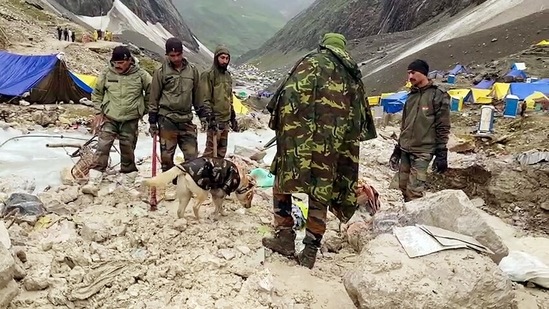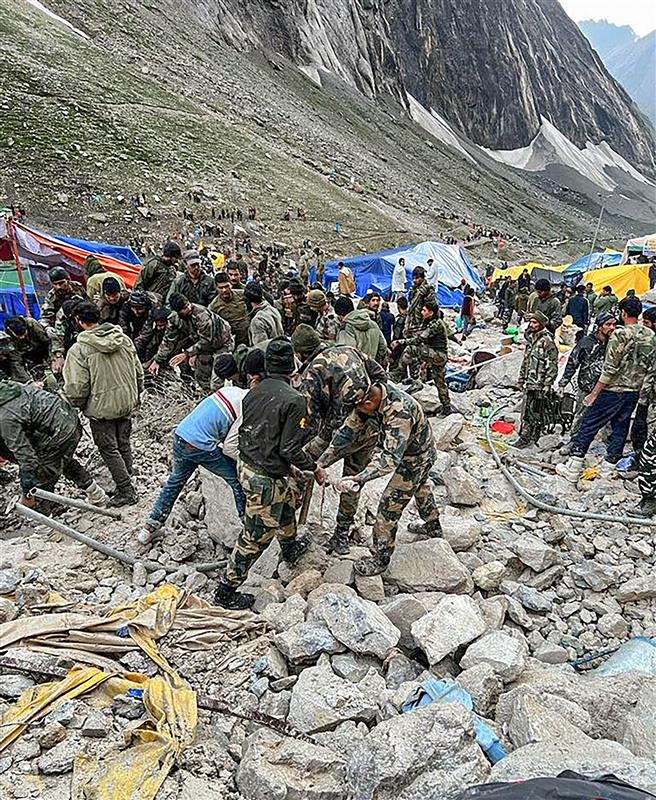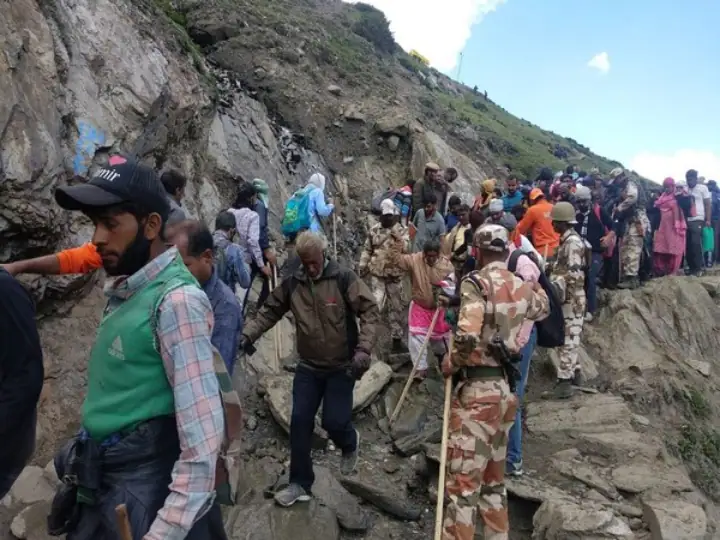- IMD director general Mrutyunjay Mohapatra said that flash floods near Amarnath cave in Jammu and Kashmir could have been triggered due to rainfall in the higher reaches of the mountains.

In one of the deadliest monsoon-related incidents this year, at least 16 people lost their lives and several were injured in a cloudburst near the Amarnath cave in Jammu and Kashmir on Friday. However, the India Meteorological Department (IMD) has now said that the incident may have occurred due to a highly localised rain event and not a cloudburst, news agency PTI reported.

IMD director general Mrutyunjay Mohapatra explained that flash floods could have been triggered due to rainfall in the higher reaches of the mountains near the shrine cave.
Weather scientists further stated that the shrine reported 31mm of rainfall between 4.30pm and 6.30pm on Friday, which is quite low to be considered a cloudburst. The Met department noted that a rain event is categorised as a cloudburst if a weather station receives 100mm of rain in 60 minutes.
The IMD has an automatic weather station near the Amarnath cave that offers forecasts during the yatra (pilgrimage). However, the mountains encompassing the shrine do not have any such weather monitoring stations owing to their inaccessibility.

Director of the Regional Meteorological Centre in Srinagar, Sonam Lotus echoed Mohapatra, calling Friday’s incident a result of a “highly localised cloud” that had formed only over the holy cave. “Such rain had happened earlier this year as well,” she was quoted as saying by PTI.
The region above the cave received 28mm of rainfall between 5.30pm and 6.30pm, an IMD scientist said.
Besides claiming over a dozen lives, the flash flood destroyed several tents and community kitchens that were put up near the shrine as they were swamped with rocks and mud. The incident was initially reported at 5.30pm on Friday, and by late evening, death toll rose to at least 16.

Rescue operation is still underway, with the National Disaster Response Force (NDRF), State Disaster Response Force (SDRF) and the Army, among other associated agencies, working in the process. As many as 40 people are still missing, and central forces are using sniffer dogs to locate any body that may be hidden beneath the debris.

persons are being airlifted for treatment. Army choppers are shifting the injured devotees to a makeshift hospital in Baltal base camp, who will then be moved to Srinagar for further treatment. The initial transportation to Baltal is happening as the IMD has predicted fresh flash floods.
The Met department has also predicted heavy rainfall with thunderstorm and lightning over Jammu and Kashmir on Sunday (July 10).
News Source : HT

